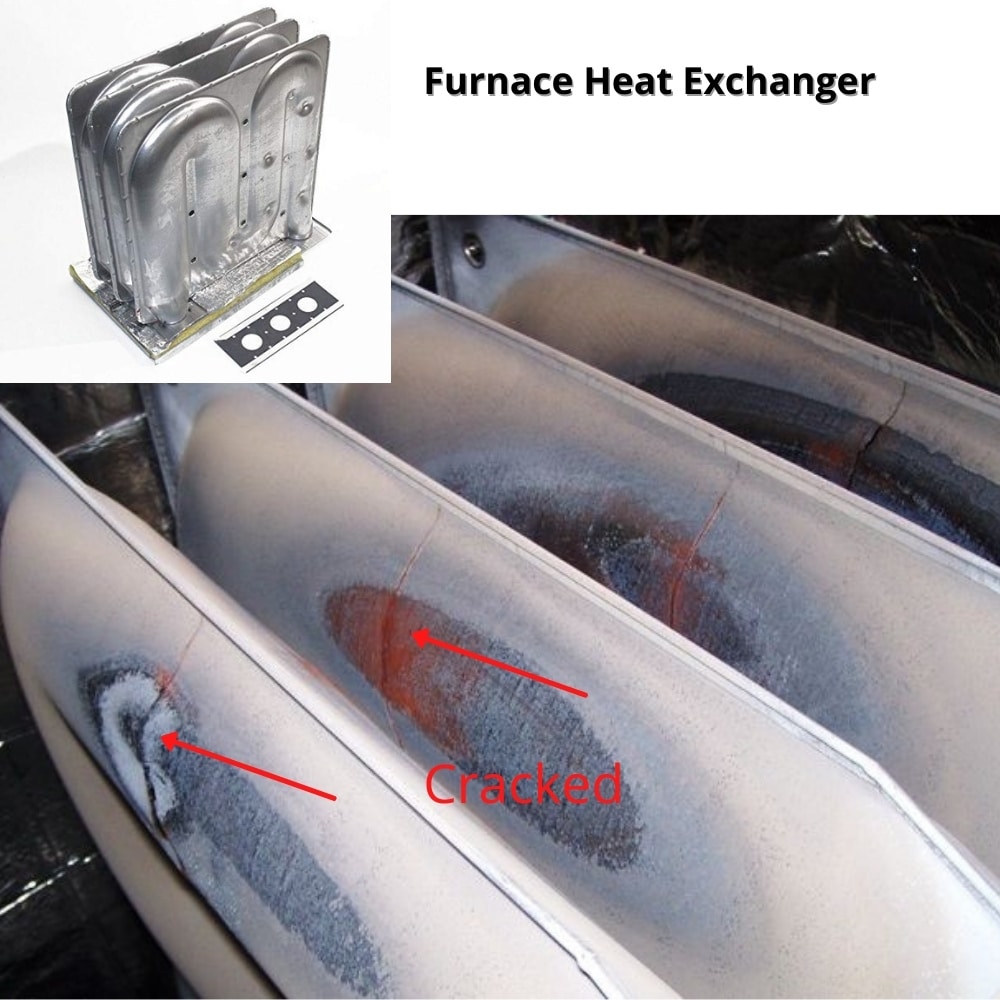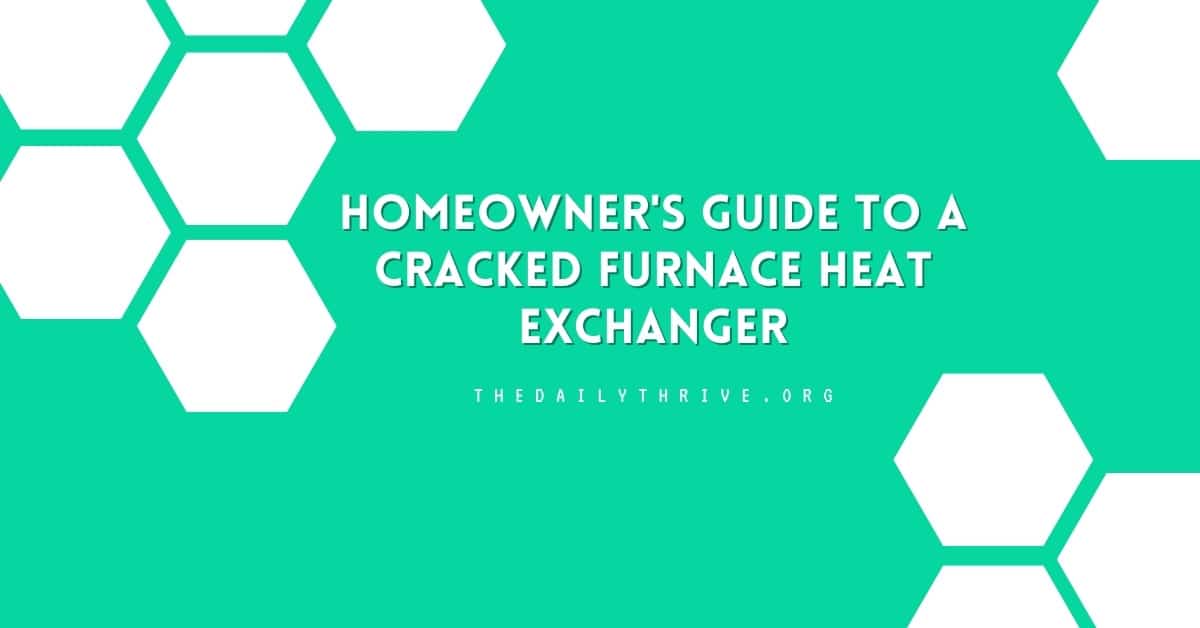A cracked heat exchanger is a big problem for every homeowner! If not handled soon, it poses a severe health and safety risk to your home and family. The flue gases will travel through that crack and will introduce excessive CO into your house. I’ll share a few tips that can help homeowners recognize cracked furnace heat exchanger in today’s post.
Cracked Furnace Heat Exchanger Symptoms
How to tell if the furnace heat exchanger is cracked? If you notice any of these symptoms, you should turn off your heating system and call for a professional inspection. Do not use the system until it has been inspected and repaired by a professional.
Visible Crack

You may be able to see cracks in the heat exchanger when you visually inspect the furnace exchanger. Cracks occur as the metal wears due to constant expansion and corrosion.
Strange Smells
A cracked heat exchanger will often create an unpleasant and strong odor that smells. If your furnace produces a strong odor and unpleasant smell, it could be that the heat exchanger has cracked.
Soot Build-Up
If you see evidence of soot, a black carbon buildup, on the inside of the furnace, it’s a sign your furnace isn’t burning cleanly. Incomplete combustion usually causes an increase in soot. The cause can be improperly adjusted burners or a cracked heat exchanger.
Abnormal Flame
The ignition flame should normally be a steady blue flame, which indicates proper furnace performance. An orange or yellow flame could mean that the burner is dirty or a cracked heat exchanger.
Strange Sounds
If you have a crack in the heat exchanger, you are likely to hear a rattling noise as your thermostat turns on the heat. Because the heat exchanger is made out of metal, cracks will expand and cause rattling, popping, and/or banging noises as it is heated.
Water Collects Around the Furnace
If water has accumulated on the floor at the base of your furnace and is not linked to a condensate drain issue, a cracked heat exchanger is the likely cause.
Why Does a Heat Exchanger Crack?
A common reason your heat exchanger crack can simply be a dirty and clogged air filter. A clogged air filter restricts airflow through the furnace and overheats the heat exchanger. As a result, too much heat will be left in the heat exchanger’s chamber, causing its coils to overheat.
Another reason a heat exchanger can crack is from corrosion and rust. If your furnace isn’t well-maintained, corrosion or rust can develop on the components, including the heat exchanger.
The crack can also occur due to the heat exchanger’s age. A furnace heat exchangers have an average lifespan of 15-18 years, so if your unit has reached this age, it may be a time to replace it.
What To Do If You Have A Cracked Heat Exchanger?
Here are some tips for homeowners:
Ask the technician to show you the cracks. Any cracks that are large enough to cause problems should be large enough to be seen when a flashlight is directed into the exchanger.
If the crack is not visible, you are likely dealing with an unscrupulous repair person, and you should send them packing. Unfortunately, the fear of a cracked heat exchanger and the potentially deadly results have caused some furnace installation companies to make false reports to increase sales.
You should always deal with a reputable HVAC company when having your system inspected and serviced. If you have doubts about the report you receive from the technician, it is always a good idea to call for a second opinion. You may also want to check with the Better Business Bureau before calling for service in the first place.
If there is a crack in the heat exchanger of your furnace, you have two options. The first is to replace the heat exchanger, and the second is to replace the entire furnace.
While you may save a little money by replacing the heat exchanger only, you are probably better off replacing the entire furnace. Installing new furnaces can be as much as sixty percent more efficient. Any savings you make by replacing only the heat exchanger will be quickly used up in energy costs.
If you choose to replace an older furnace with a newer, higher efficiency furnace, there are often tax incentives and rebates from the utility companies to help with the cost of the furnace. These incentives and rebates can help to lower the cost of replacing a furnace. In addition, most companies offering HVAC services can help you to find this financial help.






